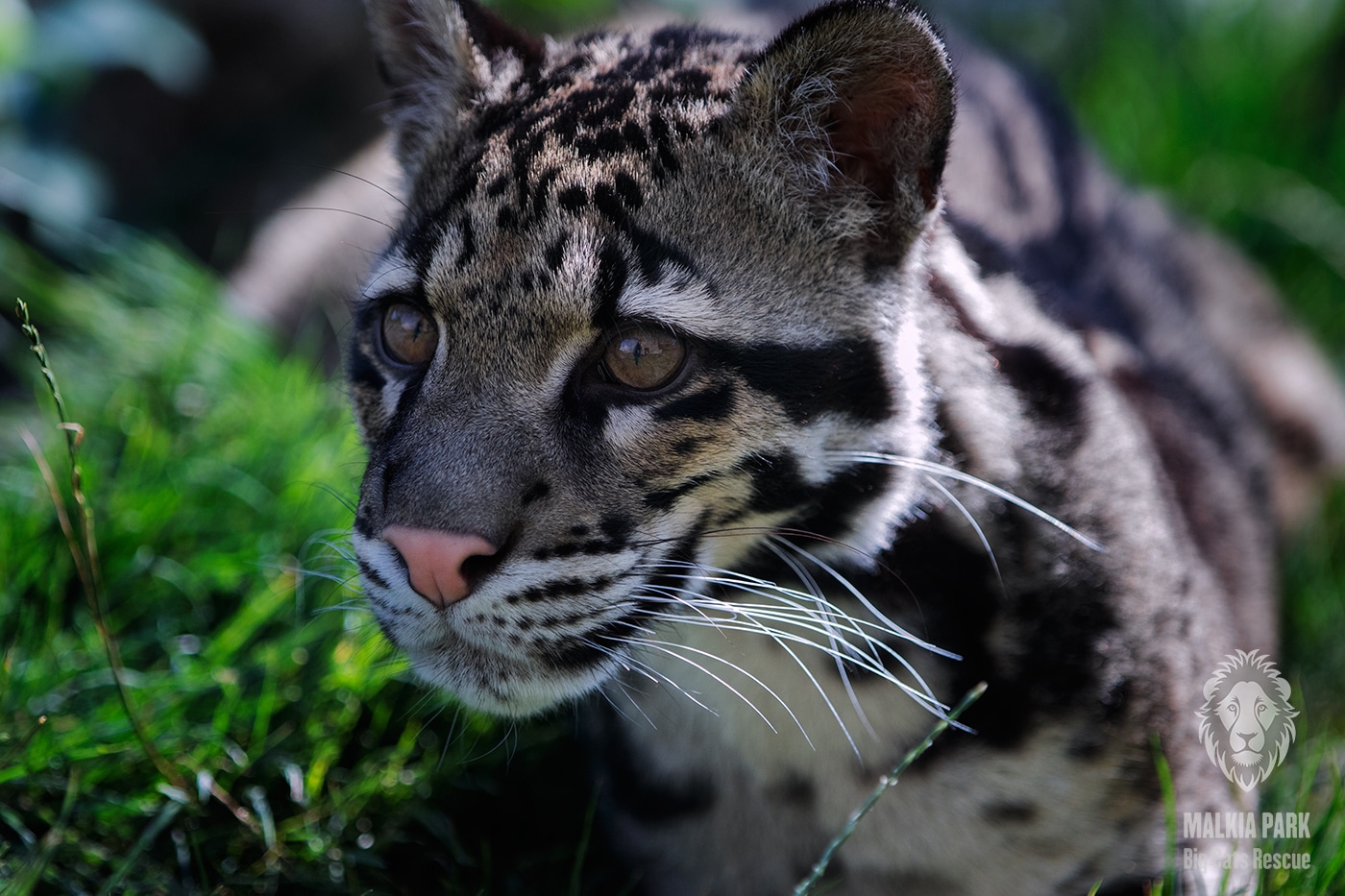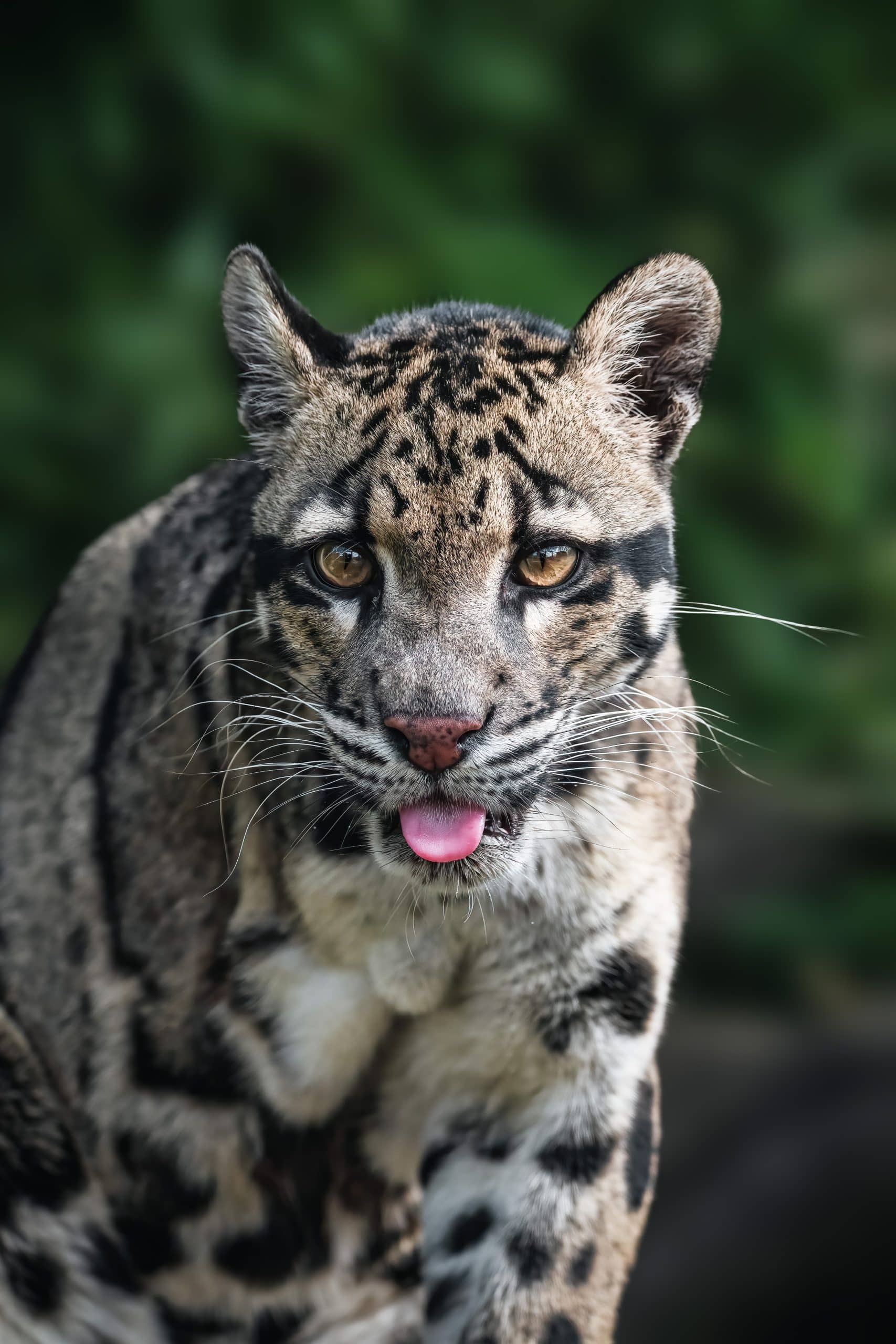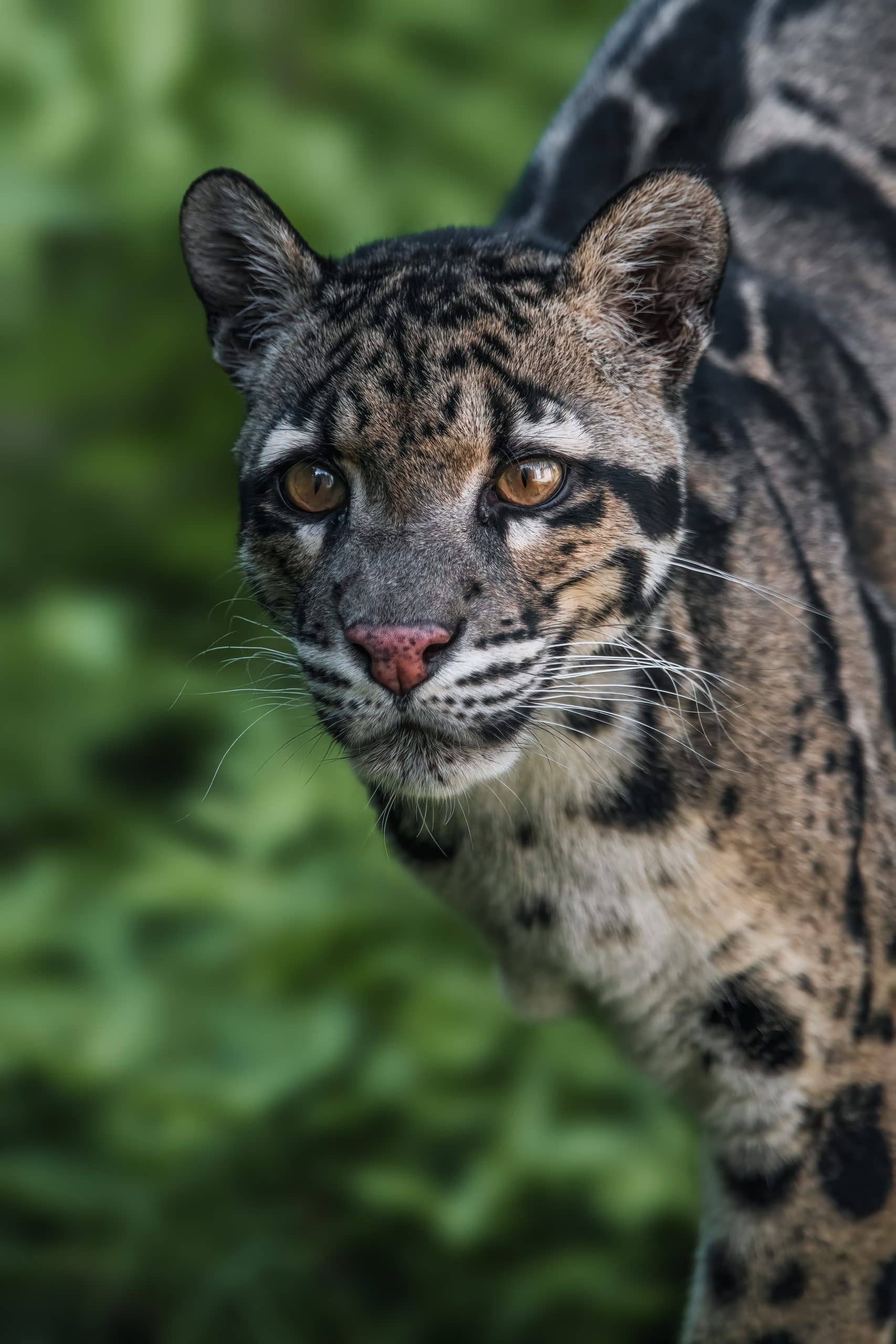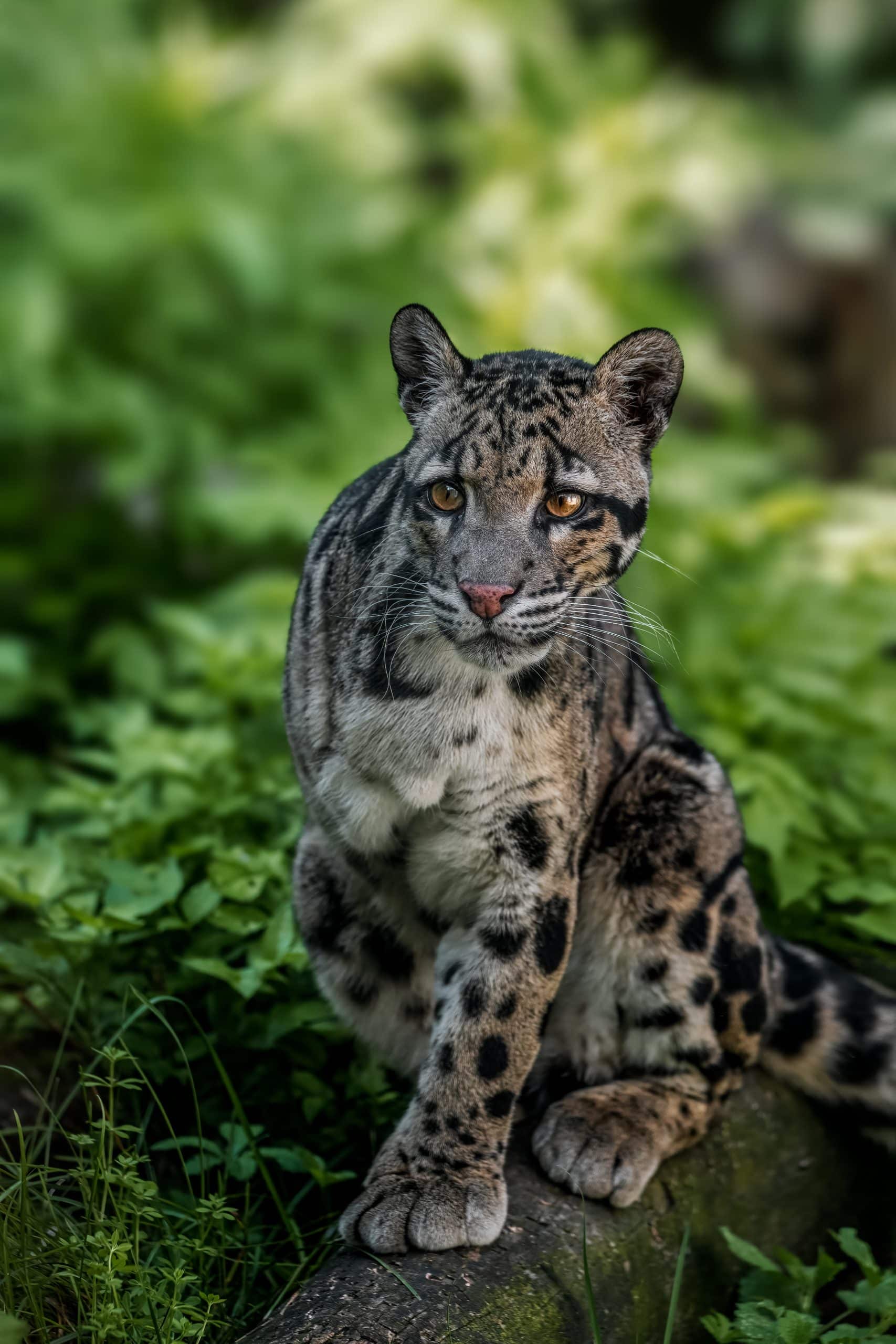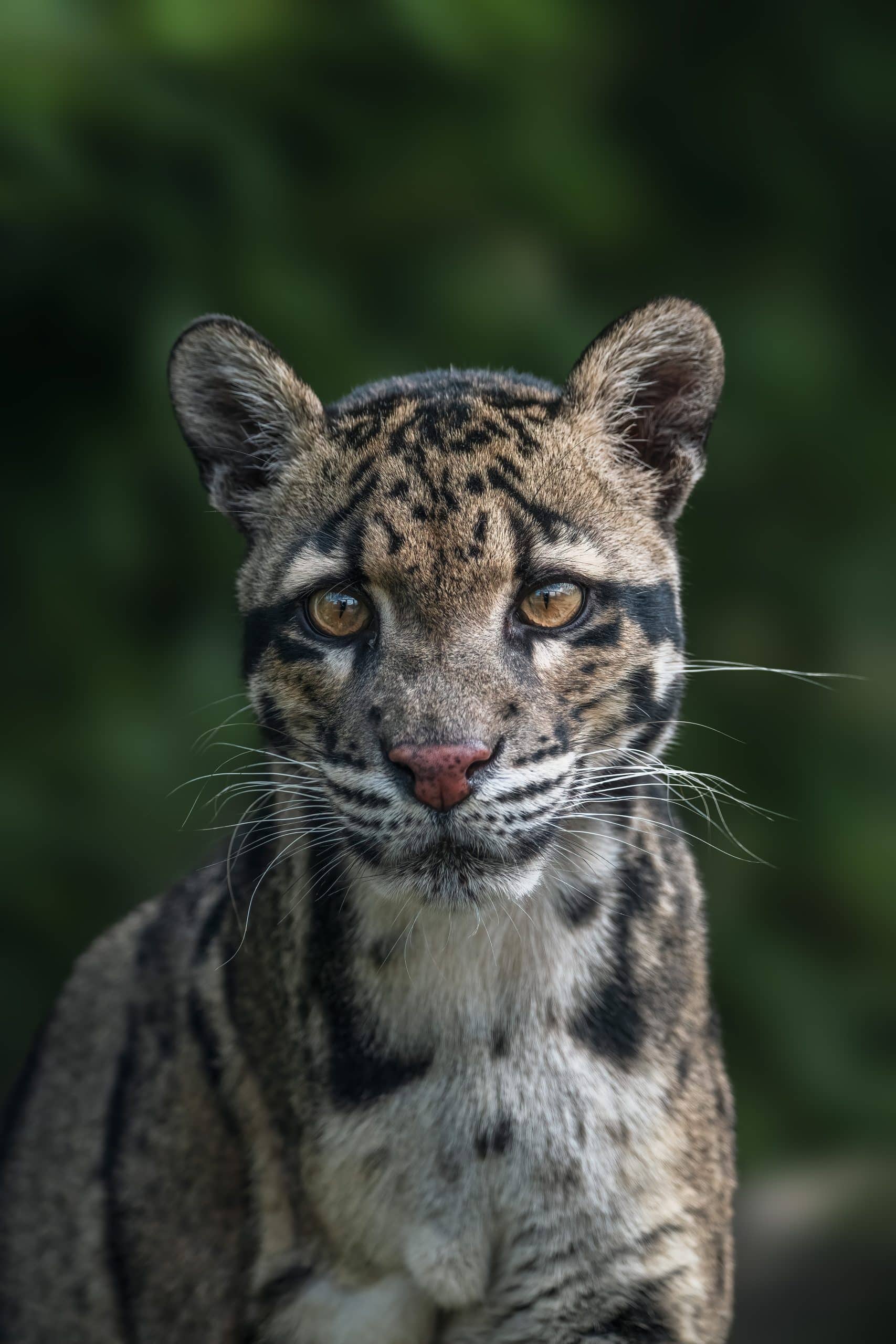It is the smallest representative of big cats. The body is territorial with short but large and strong paws.
The head is relatively small with a broad, blunt snout.
The fur of the clouded leopard is yellow-grey, with large, dark brown spots edged with black on the back and sides of the body. The face has a pattern of black spots and stripes. He also has black stripes on his neck.
In nature, they are mostly nocturnal creatures. They thus avoid larger predators such as leopard and tiger. They climb very well and can literally live on trees (they avoid leeches in the forests).
They are very territorial and solitary. They are intolerant of their own kind even during mating season. “Pytačky” are very aggressive. Cubs are born blind, they open their eyes after twelve days. At five weeks of age, they begin to get to know the den intensively. At ten weeks, they begin to receive solid food, while the mother breastfeeds them for up to 5 months. The black border of the spots is formed at the age of six months. After becoming independent (at around ten months of age), the mother chases the cubs away.
In the wild, the clouded leopard is very rare. The biggest threat to this species is deforestation of its original sites and human-illegal hunting for its beautiful fur and other body parts (especially bones and teeth) used in traditional Asian medicine. It had four subspecies, now there are only three. Taiwanese died out.
It has the longest canines relative to the skull of any feline. They reach up to 5 cm.
Unlike other big cats, the clouded leopard cannot roar because it has a completely ossified tongue. However, it can growl and purr.
It can open its mouth up to 100 degrees.
The clouded leopard’s tail is as long as its body. He can jump great distances, his beautiful long tail helps him balance. It can even climb down from a tree upside down, which is a rarity among felines (it is common, for example, with a polar bear).
